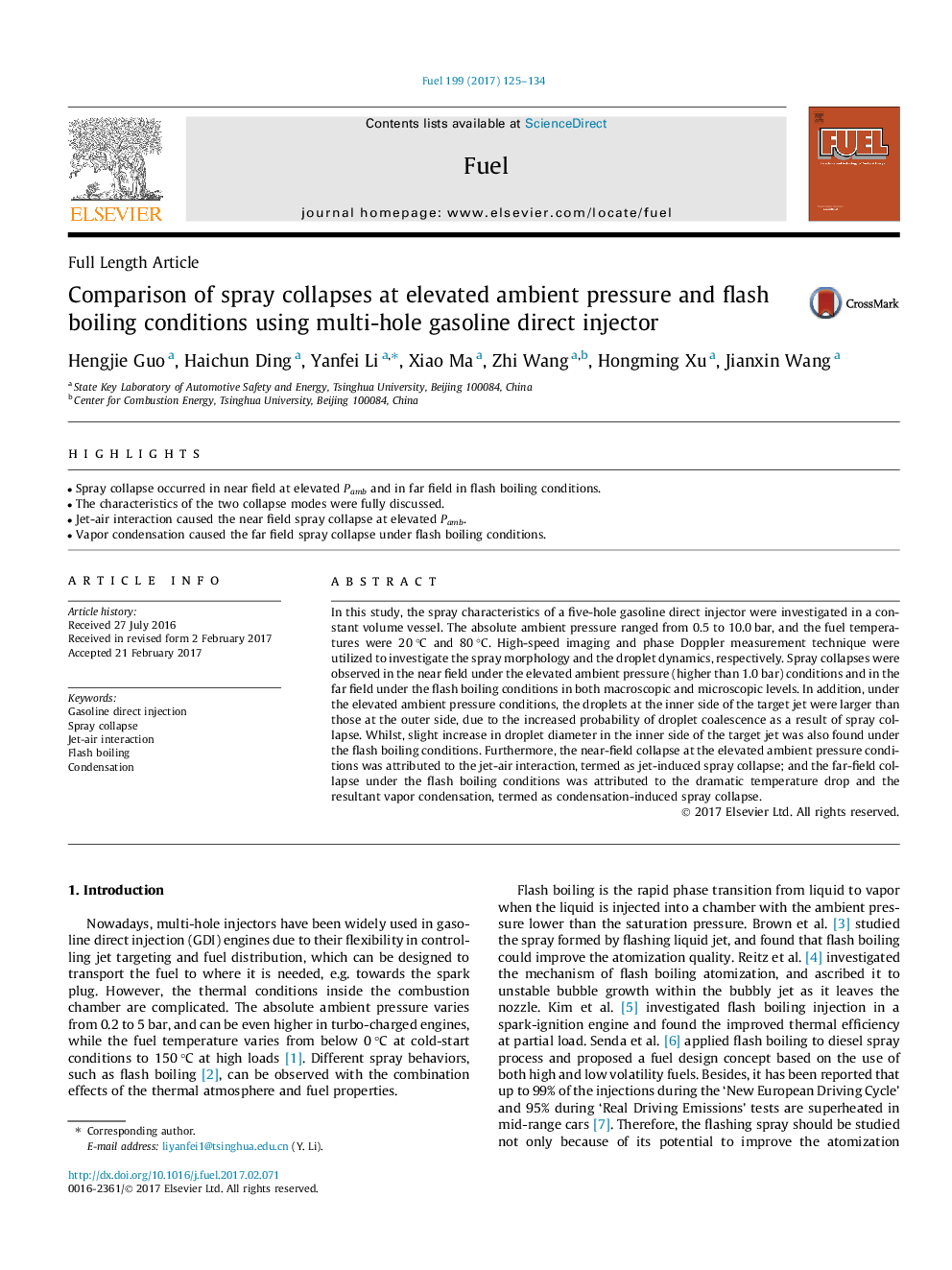| Article ID | Journal | Published Year | Pages | File Type |
|---|---|---|---|---|
| 6474714 | Fuel | 2017 | 10 Pages |
â¢Spray collapse occurred in near field at elevated Pamb and in far field in flash boiling conditions.â¢The characteristics of the two collapse modes were fully discussed.â¢Jet-air interaction caused the near field spray collapse at elevated Pamb.â¢Vapor condensation caused the far field spray collapse under flash boiling conditions.
In this study, the spray characteristics of a five-hole gasoline direct injector were investigated in a constant volume vessel. The absolute ambient pressure ranged from 0.5 to 10.0 bar, and the fuel temperatures were 20 °C and 80 °C. High-speed imaging and phase Doppler measurement technique were utilized to investigate the spray morphology and the droplet dynamics, respectively. Spray collapses were observed in the near field under the elevated ambient pressure (higher than 1.0 bar) conditions and in the far field under the flash boiling conditions in both macroscopic and microscopic levels. In addition, under the elevated ambient pressure conditions, the droplets at the inner side of the target jet were larger than those at the outer side, due to the increased probability of droplet coalescence as a result of spray collapse. Whilst, slight increase in droplet diameter in the inner side of the target jet was also found under the flash boiling conditions. Furthermore, the near-field collapse at the elevated ambient pressure conditions was attributed to the jet-air interaction, termed as jet-induced spray collapse; and the far-field collapse under the flash boiling conditions was attributed to the dramatic temperature drop and the resultant vapor condensation, termed as condensation-induced spray collapse.
